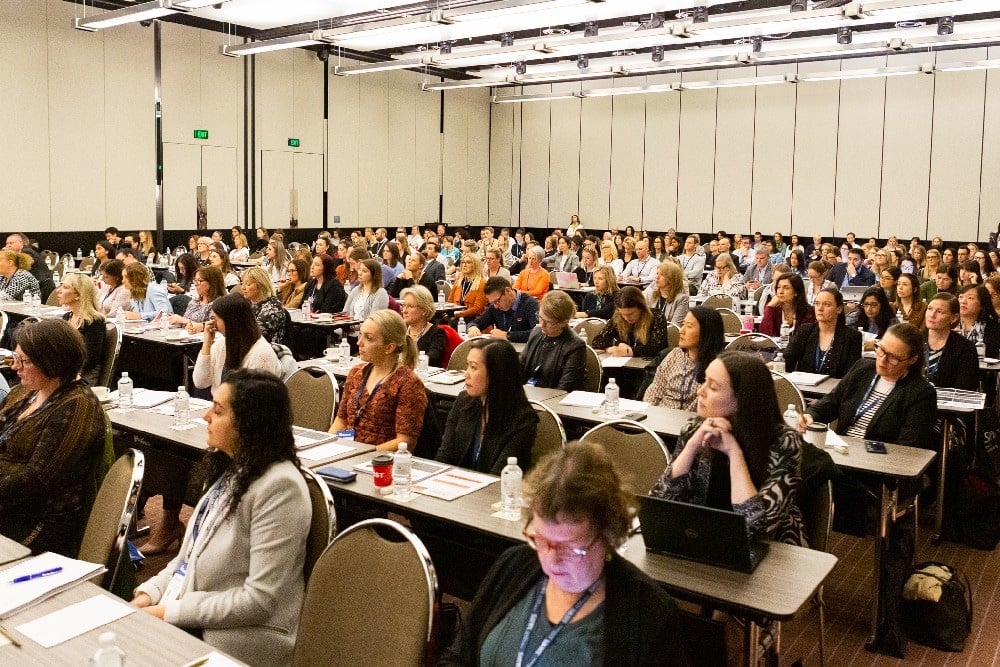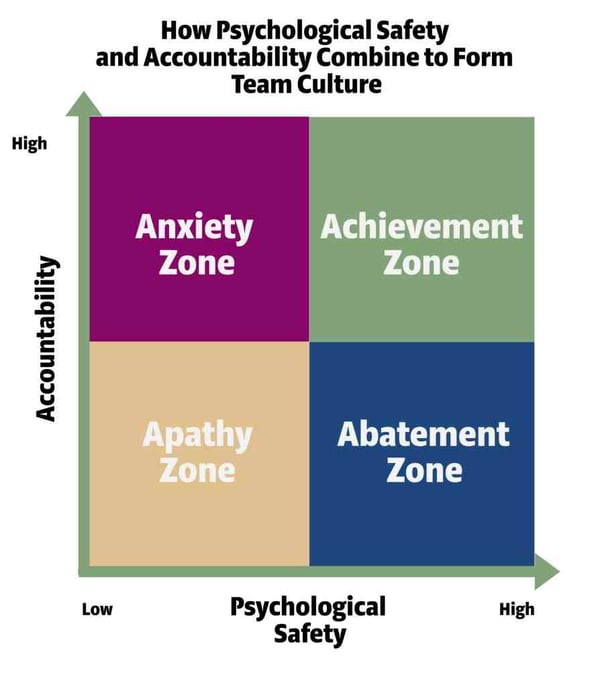
Trusted Leader Blog
Access leadership and trust building communication tips to help you improve team productivity and safety.
What’s your Cohesive Leadership Style?
How Psychological Safety and Accountability are Inextricably Linked
In a highly popular Tedx video, Amy Edmondson, a Harvard Business professor, talks through her research on the impact of high standards and psychological safety in teams. She discovered that when high levels of psychological safety and high standards collide it leads to high performance.
Her theory has been the genesis for these four zones of team performance based on work I have done with teams over the years. Except in my work, I found that accountability was a better term for organisations. After all, accountability includes high standards, working safely, getting work on time and to budget. These zones are unpacked in more detail in my book, TRUSTED TO THRIVE: How leaders create connected and accountable teams. (download a free chapter here).
Let me step you through the model above. Essentially, both psychological safety and accountability are modelled and managed by the team leader. How a leader models and rewards behaviour creates the culture in which a team operates:
Leaders: How to Reduce Fear in Teams during COVID-19

At this point in time, there are many people in fear and anxiety. As a leader, you’re undoubtedly feeling panicked about what you can do to help your employees, family friends and organisation.
How to Talk about the Future and Build Workplace Trust

Over the years, I’ve worked with many CEOs across Australia from predominantly midsize companies. Some will complain about their people not being fully productive or trusting others in the organisation. They despair at how their staff gossip and assume the worst-case scenario.
3 Critical Trust Factors to Lead and Manage Team Effectiveness

In a wood-panelled conference room in Seattle, a handsome dark-haired man called Nick sits with three people. They are all working together on a marketing plan for a start-up. It looks like a typical business meeting. One of possibly thousands that occur in the city each day. Except Nick is not a business man. He’s an actor with a secret mission to sabotage the group’s performance.
How to Build Trust in your Team
High-performance teams are vital to an organisation’s success. But they need TRUST first to succeed.
4 Top Insights from the HRD HR Summit in Melbourne

Recently, I chaired the two day Melbourne HRD HR Summit that included heads of people, culture and learning from a variety of well-known Australian and international brands. Companies such as Spotify, Australia Post, Telstra, Hesta, St Vincent de Paul Society and Mirvac.
4 Steps for Empathetic Leaders to Stop Trust Becoming a Weakness

The world needs more high-trust leaders. Leaders, who support those around them, respect other people’s viewpoints and who are open to being challenged and challenging others to bring out their best. Leaders who trust people and believe in them.
5 Critical Steps to Foster a High Performance C Suite

To continue to grow and solve today’s tricky business challenges, requires organisations to adopt new ways of working, in order to stay relevant. Unlocking the value by enabling cross-functional collaboration; between finance, HR, marketing, sales, operations and technology and so on, enables cultural agility. The first place to start is with the C suite.

